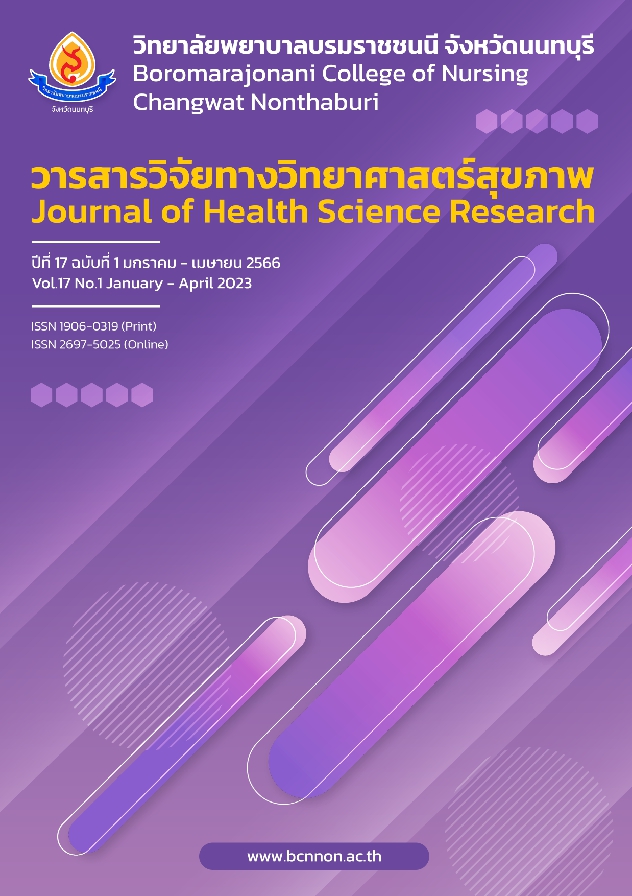ความเต็มใจยอมรับและความเต็มใจที่จะจ่ายเงิน เพื่อรับวัคซีนกระตุ้นซ้ำป้องกันโรคโควิด 19
Main Article Content
บทคัดย่อ
บทนำ : โรคโควิด 19 เป็นโรคอุบัติใหม่ที่ต้องเร่งผลิตและจัดหาวัคซีนเพื่อควบคุมและป้องกันโรค วัคซีนที่ภาครัฐจัดหาไม่สามารสร้างความมั่นใจในประสิทธิภาพ จึงทำให้เกิดทางเลือกและยอมจ่ายค่าวัคซีนจากประชาชนเอง
วัตถุประสงค์การวิจัย : 1) ศึกษาปัจจัยที่มีผลต่อการฉีดวัคซีนป้องกันโรคโควิด 19 2) เหตุผลและความเต็มใจที่จะจ่ายเงินเพื่อรับวัคซีนกระตุ้นซ้ำป้องกันโรคโควิด 19 และ 3) จัดทำข้อเสนอแนะเชิงนโยบายในการได้รับวัคซีน ในประเทศไทย
วิธีการวิจัย : เป็นวิจัยแบบผสมวิธี มี 2 ระยะคือ ระยะที่ 1 ศึกษาปัจจัยที่มีผลต่อการฉีดวัคซีนและศึกษาเหตุผลและความเต็มใจที่จะจ่ายเงินเพื่อรับวัคซีนป้องกันโรคโควิด 19 จากตัวอย่าง 1,740 คน วิเคราะห์ข้อมูลโดยใช้สถิติ Multiple logistic regression ระยะที่ 2 จัดทำข้อเสนอแนะเชิงนโยบายการฉีดวัคซีนในประเทศไทย วิเคราะห์ข้อมูลเชิงเนื้อหา
ผลการวิจัย : ปัจจัยที่มีผลต่อฉีดวัคซีนโควิด 19 ได้แก่ 1) ความตั้งใจฉีดวัคซีน 2) ความมั่นใจในประสิทธิภาพของวัคซีน 3) ทัศนคติต่อการฉีดวัคซีน 4) จำนวนเข็มที่ได้รับวัคซีน 5) อายุ
6) เขตที่อยู่อาศัย 7) ประวัติวัคซีนไข้หวัดใหญ่ 8) การเป็นบุคลากรทางการแพทย์ และ 9) รายได้ เหตุผลเพื่อยอมจ่ายวัคซีนโควิด 19 คือ มีประสิทธิผลป้องกัน ร้อยละ 76.67 โดยราคาวัคซีนที่จ่ายได้เองคือ 500-999 บาท ร้อยละ 33.24
สรุปผล : ข้อเสนอแนะเชิงนโยบายในการรับวัคซีนในประเทศไทย ได้แก่ ความเป็นกลางของสื่อ การจัดสรรวัคซีนที่ทำให้ประชาชนมั่นใจ การให้ อสม.รณรงค์ฉีดวัคซีน และการจัดลำดับกลุ่มวัยที่ควร
ได้รับวัคซีน
Downloads
Article Details

อนุญาตภายใต้เงื่อนไข Creative Commons Attribution-NonCommercial-NoDerivatives 4.0 International License.
บทความที่ได้รับการตีพิมพ์เป็นลิขสิทธิ์ของวิทยาลัยพยาบาลบรมราชชนนี จังหวัดนนทบุรี
ข้อความที่ปรากฏในบทความแต่ละเรื่องในวารสารวิชาการเล่มนี้เป็นความคิดเห็นส่วนตัวของผู้เขียนแต่ละท่านไม่เกี่ยวข้องกับวิทยาลัยพยาบาลบรมราชชนนี จังหวัดนนทบุรี และคณาจารย์ท่านอื่น ในวิทยาลัยฯ แต่อย่างใด ความรับผิดชอบองค์ประกอบทั้งหมดของบทความแต่ละเรื่องเป็นของผู้เขียนแต่ละท่าน หากมีความผิดพลาดใด ๆ ผู้เขียนแต่ละท่านจะรับผิดชอบบทความของตนเองแต่ผู้เดียว
เอกสารอ้างอิง
WHO. Director-General’s opening remarks at the media briefing on COVID-19. [internet]. 2020. [cited 2021 Mar 20]; Available from: https://www.who.int/director-general/speeches/ detail/who-director-general-s-opening-remarks-at-the-media-briefing-on-covid-19---11-march-2020.
Sherman SM, Smith LE, Sim J, Amlôt R, Cutts M, Dasch H, et al. COVID-19 vaccination intention in the UK: results from the COVID-19 vaccination acceptability study (CoVAccS), a nationally representative cross-sectional survey. Hum Vaccin Immunother. 2021;17(6):1612-21. doi: 10. 1080/21645515.2020.1846397.
Robinson E, Jones A, Daly M. International estimates of intended uptake and refusal of COVID-19 vaccines: A rapid systematic review and meta-analysis of large nationally representative samples. Vaccine. 2021;39(15):2024-34. doi: 10. 1016/j.vaccine.2021.02.005.
Troiano G, Nardi A. Vaccine hesitancy in the era of COVID-19. Public Health. 2021;194: 245-51. doi: 10.1016/j.puhe.2021.02.025.
Department of Disease. Control, Ministry of Public Health. Thailand's COVID-19 vaccine. [internet]. 2021 [cited 2021 May 31]; Available from: https://ddcmoph.go.th/ vaccine-covid19/.
Ajzen, I. The theory of planned behavior. Organ Behav Decis Process. 1991;50(2): 179-211. doi: 10.1016/0749-5978(91)90020-T.
Hsieh FY, Bloch DA, Larsen MD. A simple method of sample size calculation for linear and logistic regression. Stat Med. 1998;17(14):1623-34. doi: 10.1002/(sici) 1097-0258(19980730)17:14<1623::aid-sim871>3.0.co;2-s.
Kamis A, Zhang Y, Kamis T. A multiyear model of influenza vaccination in the United States. Int J Environ Res Public Health. 2017;14(8):849. doi: 10.3390/ijerph 14080849.
Carlin JB, Hocking J. Design of cross-sectional surveys using cluster sampling: an overview with Australian case studies. Aust N Z J Public Health. 1999;23(5):546-51. doi: 10.1111/j.1467-842x.1999. tb01317.x.
Wejnert C, Pham H, Krishana N, Le B, Dinenno E. Estimating design effect and calculating sample size for respondent-driven sampling studies of injection drub users in the Unied Strates. AIDS Behav. 2012;16(4):797-806. doi: 10.1007/s10461-012-0147-8.
Wake AD. The willingness to receive COVID-19 vaccine and its associated factors: "vaccination refusal could prolong the war of this pandemic" A systematic review. Risk Manag Healthc Policy. 2021;14: 2609–23. doi: 10.2147/ RMHP.S311074.
Maltezou HC, Pavli A, Dedoukou X, Georgakopoulou T, Raftopoulos V, Drositis I, et al. Determinants of intention to get vaccinated against COVID-19 among healthcare personnel in hospitals in Greece. Infect Dis Health. 2021;26(3):189-97. doi: 10.1016/j.idh.2021.03.002.
Sonawane K, Troisi CL, Deshmukh AA. COVID-19 vaccination in the UK: Addressing vaccine hesitancy. Lancet Reg Health Eur. 2021;1:100016. doi:101016/j.lanepe.2020. 100016.
Alqudeimat Y. Alenezi D, AlHajri B, Alfouzan H, Almokhaizeem Z, et al. Acceptance of a COVID-19 vaccine and its related determinants among the general adult population in Kuwait. Med Princ Pract. 2021;30(3):262-71. doi: 10.1159/ 000514636.
Kumari A, Ranjan P, Chopra S, Kaur D, Kaur T, Kalanidhi KB, et al. What Indians think of the COVID-19 vaccine: A qualitative study comprising focus group discussions and thematic analysis. Diabetes Metab Syndr. 2021;15(3):679-82. doi: 10.1016/j.dsx.2021.03.021.
Coe BA. Elliott MH, Gatewood SBS, Goode JR, Moczygemba LR.Perceptions and predictors of intention to receive the COVID-19 vaccine. Res Social Adm Pharm. 2022;18(4):2593-9. doi. 10. 1016/j.sapharm. 2021.04.023.
Detoc M, Bruel S, Frappe P, Tardy B, Botelho-Nevers E, Gagneux-Brunon A, Intention to participate in a COVID-19 vaccine clinical trial and to get vaccinated against COVID-19 in France during the pandemic, Vaccine. 2020;38(45):7002-6. doi: 10.1016/j.vaccine.2020.09.041.
Paul E, Steptoe A, Fancourt D. Attitudes towards vaccines and intention to vaccinate against COVID-19: Implications for public health communications. Lancet Reg Health Eur. 2021;1:100012. doi.10.1016/j.lanepe. 2020.100012.
Cerda AA, García LY. Willingness to pay for a COVID-19 vaccine. Appl Health Econ Health Policy. 2021;19(3):343-51. doi: 10. 1007/s40258-021-00644-6.
Catma S, Varol S. Willingness to pay for a hypothetical COVID-19 vaccine in the United States: A contingent valuation approach. Vaccines (Basel). 2021;9(4):318. doi: 10.3390/vaccines9040318.
Goruntla N, Chintamani SH, Bhanu P, Samyuktha S, Veerabhadrappa KV, Bhupalam P, et al. Predictors of acceptance and willingness to pay for the COVID-19 vaccine in the general public of India: A health belief model approach. Asian Pac J Trop Med. 2021;14(4):165-75. doi: 10.4103/1995-7645.312512.


